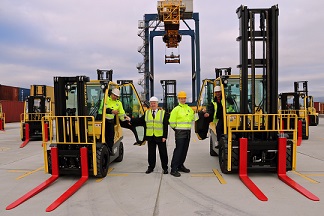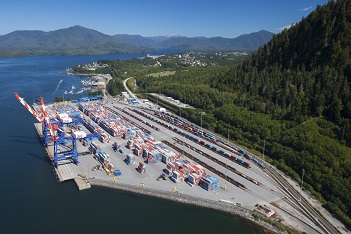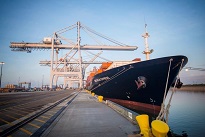As part of a wider investment to increase capacity, efficiency and environmental performance, the Port of Grangemouth (part of the Forth Ports Group) has replaced its existing fleet with 15 new Hyster machines.
The new deal includes full maintenance on the new fleet, which consists of 12 tonne, 7 tonne, 5 tonne and 3 tonne counterbalance trucks. A number of the trucks have been specified with lower, 2.5m masts for loading and unloading containers and, as part of the contract, all the trucks at Grangemouth will have round-the-clock support from a team of locally-based Briggs Engineers.
John Shields, Briggs Key Account Manager Scotland, commented:
“We’re delighted to deliver this new fleet, which strengthens our long-standing relationship with Forth Ports – both at Grangemouth and its other facilities in Scotland. Plus our skilled engineers ensure maximum uptime on equipment to maintain productivity.
“These new trucks boast the latest Kubota diesel engines that offer between 15 and 20 per cent fuel savings and reduced carbon emissions. This will help the company to meet its ambitious environmental targets whilst delivering improved performance as the port continues to expand its operations.”
All the new trucks benefit from the latest Euro 6 diesel engines and will help the 386 acre facility to meet its target of reducing CO2 emissions generated through Port operations.
As well as delivering fuel cost savings and environmental improvements, the Hyster range also provided the most effective solution for meeting one of the port’s biggest challenges, the wide variety of goods passing through.
Port Manager, Derek Knox, explained: “This is another major investment for the business which will further secure our position as Scotland’s largest container terminal. More than £6 billion worth of goods passes through Grangemouth each year including steel plate, timber, paper and equipment for the oil and gas industry. We also handle some of the country’s most valuable exports, such as fine foods and drinks, so flexibility and durability was a key priority when specifying the new trucks for our business.
“Briggs and Hyster provided the ideal solution for a whole fleet replacement. By reducing our supplier base and having a sole supplier we have streamlined our operation, whilst the comfort and ease of use offered by the new trucks has been welcomed by our operators.”
Briggs Equipment is the national distributor of Hyster forklifts, providing high performance equipment, industry-leading service support and clear reporting; all to deliver real cost savings on customers’ fleets.
Caption:
John Shields, Briggs Key Account Manager Scotland (centre left) and
Port Manager, Derek Knox (centre right) hand over keys to the new trucks to
Chris Gibb and Robert Hunter.




